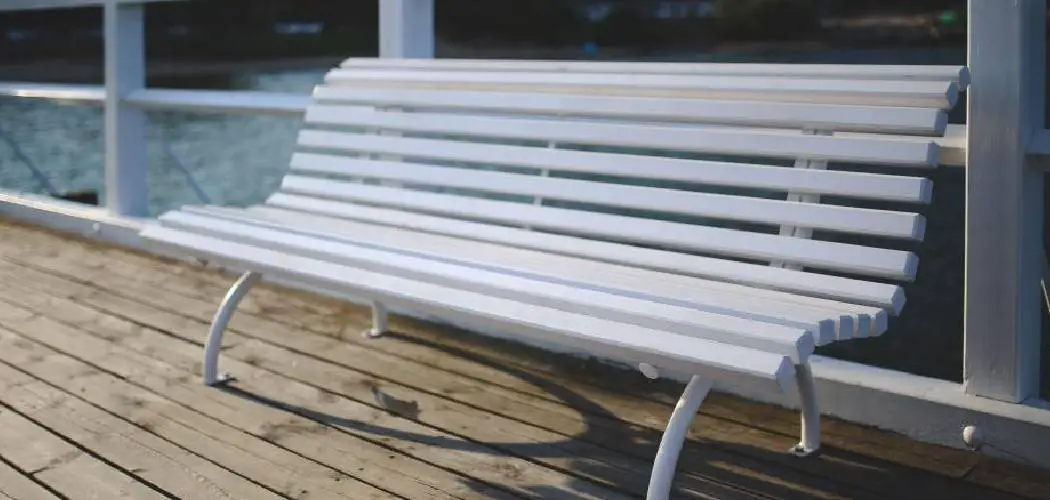Keeping white patio furniture clean can be challenging, especially when exposed to outdoor elements like dirt, pollen, and weathering. Regular maintenance not only preserves its bright appearance but also extends its lifespan. With the right cleaning techniques and tools, you can restore your white patio furniture to its original brilliance and keep it looking fresh all year round. This guide aims to provide a clear and straightforward explanation of how to clean white patio furniture.
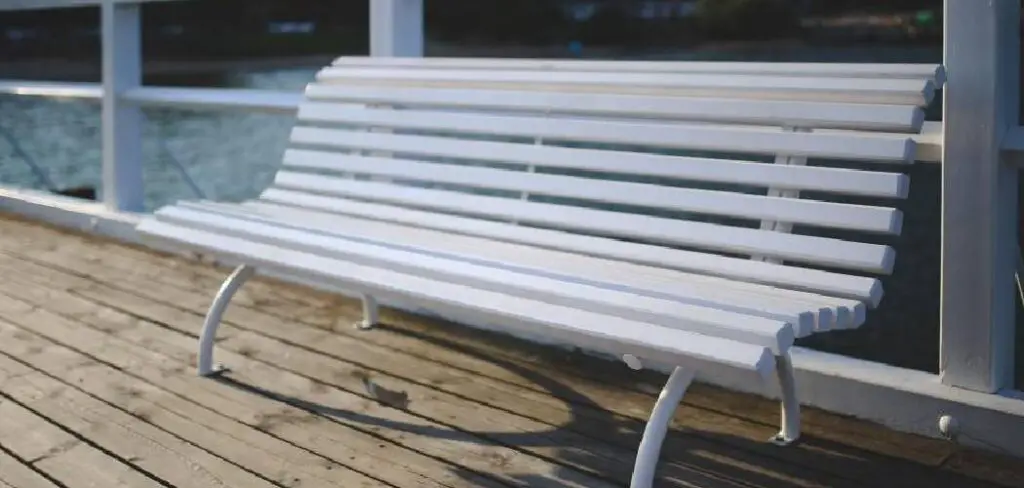
Common Problems with White Outdoor Furniture
- Stains and Discoloration
White furniture is highly susceptible to stains caused by dirt, food spills, and environmental elements such as bird droppings or tree sap. Over time, exposure to sunlight can also lead to discoloration, giving the furniture a yellow or dingy hue.
- Mold and Mildew Growth
When exposed to moisture, white outdoor furniture can develop mold and mildew, marring its appearance and potentially causing unpleasant odors. This is especially common in humid or rainy climates.
- Scratches and Surface Damage
Frequent use and exposure to abrasive debris like sand or gravel can lead to scratches on the surface, making the furniture more prone to staining and wear.
- Fading Due to UV Exposure
Prolonged exposure to direct sunlight can cause the material to fade, weakening its structure and leaving it looking dull and aged.
- Accumulation of Dust and Pollen
Outdoor furniture often collects dust, pollen, and other airborne particles, which can settle into crevices and make cleaning more challenging.
Identifying these common problems is the first step to effectively maintaining your white patio furniture and ensuring it remains in pristine condition.
Supplies Needed for Cleaning
To properly clean and maintain your white patio furniture, you’ll need the following supplies:
- Mild soap or detergent – A gentle cleaning solution to remove dirt and grime without damaging the material.
- Soft-bristle brush or sponge – Ideal for scrubbing surfaces without causing scratches.
- Bucket of warm water – For rinsing and mixing your cleaning solution.
- Microfiber cloths – Perfect for wiping down and drying the furniture after cleaning.
- Hose or spray bottle – For rinsing off soap and debris efficiently.
- Protective gloves – To protect your hands during the cleaning process.
- Outdoor furniture protectant (optional) – To add a layer of protection against UV rays and weather damage.
Having these supplies on hand will make cleaning your patio furniture more effective and keep it looking its best.
10 Methods How to Clean White Patio Furniture
1. Rinse Thoroughly with a Garden Hose to Remove Surface Dirt
White patio furniture, while crisp and elegant, shows dirt more easily than darker finishes. The first and most straightforward method for cleaning is a good rinse with your garden hose. Spray down the entire piece, focusing on the legs, arms, and horizontal surfaces where dust and debris tend to collect. This step removes loose dirt, pollen, leaves, and bugs without any abrasion. Rinsing also prepares the surface for deeper cleaning by softening stuck-on grime. Doing this regularly—especially after windy or rainy days—helps prevent the accumulation of surface grime and keeps your white furniture looking bright.
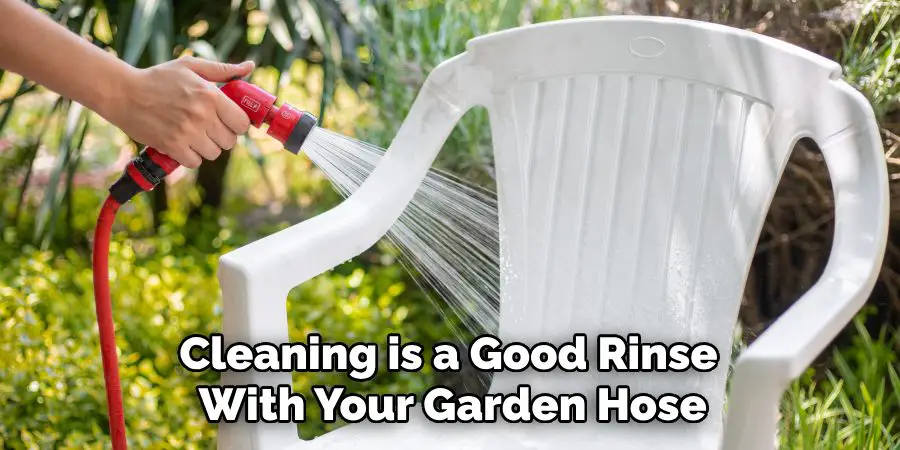
2. Wash with Mild Dish Soap and Warm Water for General Cleaning
A simple and effective method for everyday maintenance involves warm water mixed with mild dish soap. Use a soft sponge or microfiber cloth to gently scrub the furniture. White surfaces are prone to yellowing or developing a dull finish if not cleaned regularly, and this gentle approach helps maintain their luster. Be sure to wipe in circular motions and rinse thoroughly afterward to avoid streaking or soap residue. This technique works for plastic, metal, resin, and even white-painted wood furniture, making it a versatile go-to for routine care.
3. Use a Baking Soda Paste to Tackle Stubborn Stains
For areas with stubborn stains such as rust marks, mildew spots, or greasy residue, a paste made from baking soda and water works wonders. Mix the paste to a toothpaste-like consistency and apply it directly to the stained area. Let it sit for 10–15 minutes to allow the baking soda to work its magic, then gently scrub with a soft brush or sponge. This mildly abrasive paste helps lift the stain without scratching the surface. Rinse thoroughly once done. This method is especially useful on textured or matte white finishes where dirt tends to cling.
4. Try a White Vinegar Solution to Brighten and Disinfect
White vinegar is a natural cleaner that both disinfects and brightens. Mix equal parts vinegar and water in a spray bottle and spritz it over your white patio furniture. Let it sit for a few minutes, especially in areas prone to mildew or algae. Then wipe it clean with a cloth or sponge. Vinegar is particularly effective on plastic and resin furniture, cutting through dull films and hard water stains without damaging the material. It also neutralizes odors, making your outdoor area feel as clean as it looks.
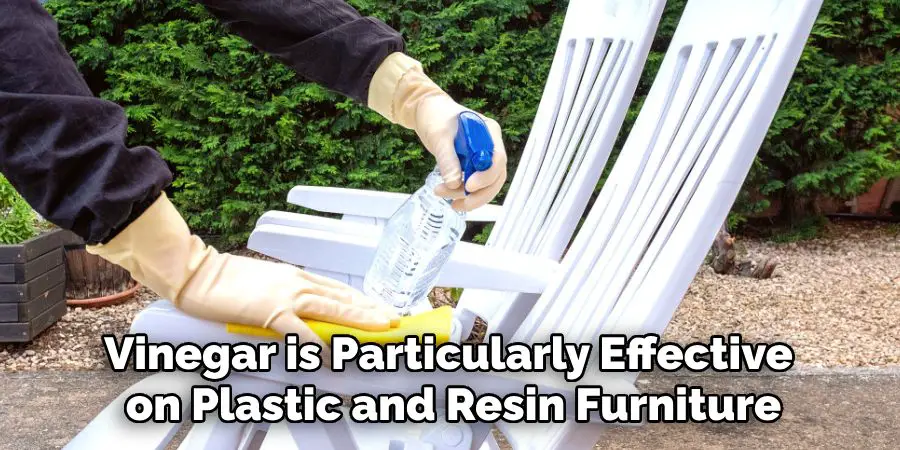
5. Use Magic Erasers for Spot Cleaning Scuff Marks
Sometimes white furniture develops unsightly scuff marks or streaks that soap and water can’t remove. For these, a melamine sponge—commonly known as a Magic Eraser—is a handy tool. Dampen the sponge with water and gently rub the stained or scuffed area. These sponges work like ultra-fine sandpaper, so use them carefully and sparingly, especially on glossy or painted finishes. They’re ideal for touch-ups and high-visibility areas like chair arms or table edges, where marks are most noticeable. Just remember to rinse the area afterward to remove any leftover debris.
6. Avoid Harsh Cleaners Like Bleach or Ammonia on Delicate Surfaces
Though bleach may seem like the go-to for white surfaces, it’s not always safe—especially for powder-coated metal, painted wood, or certain plastics. Harsh cleaners like bleach, ammonia, and acetone can discolor, pit, or degrade finishes over time. They can also make plastic brittle or strip protective coatings. If you must use bleach (for instance, to combat serious mold or mildew), dilute it with plenty of water (at least 10:1), apply sparingly with a sponge, and rinse immediately and thoroughly. For long-lasting beauty, stick to pH-neutral or mild cleaning products instead.
7. Pressure Wash with Caution for Deep Cleaning
If your white patio furniture is especially grimy—perhaps after a season of neglect—consider using a pressure washer. Use a low-pressure setting (below 1,500 PSI) and a wide fan tip to avoid damaging the surface. Hold the wand at least 18 inches away and spray in sweeping motions. Pressure washing can strip away layers of dirt, mold, or algae with little effort, but it must be done carefully to avoid etching the material. Always test on a small, hidden area first, and follow up with a rinse and dry to prevent water spots or streaking.
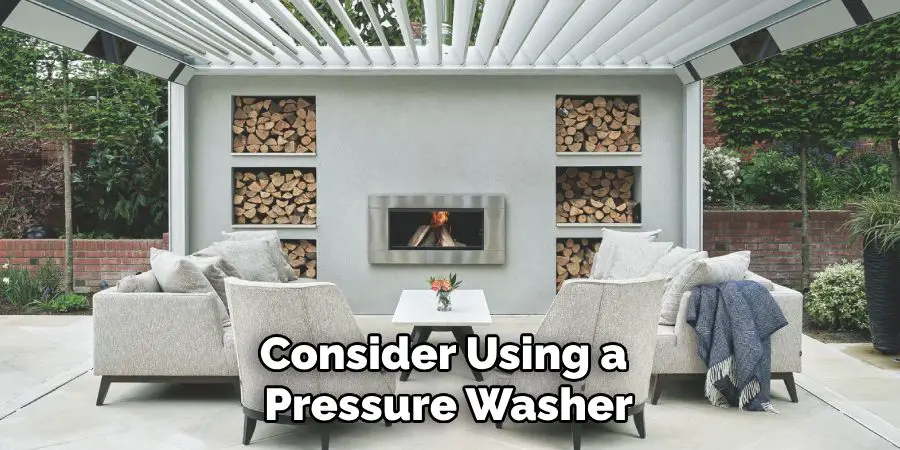
8. Dry the Furniture Immediately to Prevent Water Spots
After rinsing or washing your white patio furniture, take time to dry it with a clean, soft towel or microfiber cloth. While air-drying may seem convenient, it can lead to water spots or streaks—especially if you live in an area with hard water. Drying by hand also gives you a chance to inspect the furniture closely, spot missed stains, and ensure no moisture is trapped in crevices where mildew might grow. Regular towel-drying, particularly after a rain or cleaning session, keeps the furniture looking polished and spotless.
9. Apply a Protective Spray to Maintain Whiteness and Repel Dirt
Once your white patio furniture is thoroughly cleaned and dried, consider applying a protective spray or UV protectant specifically designed for outdoor furniture. These sprays help guard against fading, yellowing, and dirt adhesion. Many are formulated for plastic, resin, or metal and create an invisible layer that repels water and debris. Apply it as the final step in your cleaning routine, following the product’s instructions carefully. This not only extends the time between cleanings but also enhances the overall shine and brightness of your furniture.
10. Establish a Routine Cleaning Schedule to Keep Furniture Looking Fresh
Prevention is always easier than restoration. By establishing a regular cleaning routine, you’ll ensure that your white patio furniture stays bright and beautiful without major effort. Weekly dusting or rinsing, monthly washing with soapy water, and seasonal deep cleaning with baking soda or vinegar will keep grime from accumulating. During the off-season or during rainy periods, consider covering your furniture or storing it in a sheltered area. Consistency is the key to preserving the elegance of white patio pieces, especially those exposed to sun, pollen, and daily use.
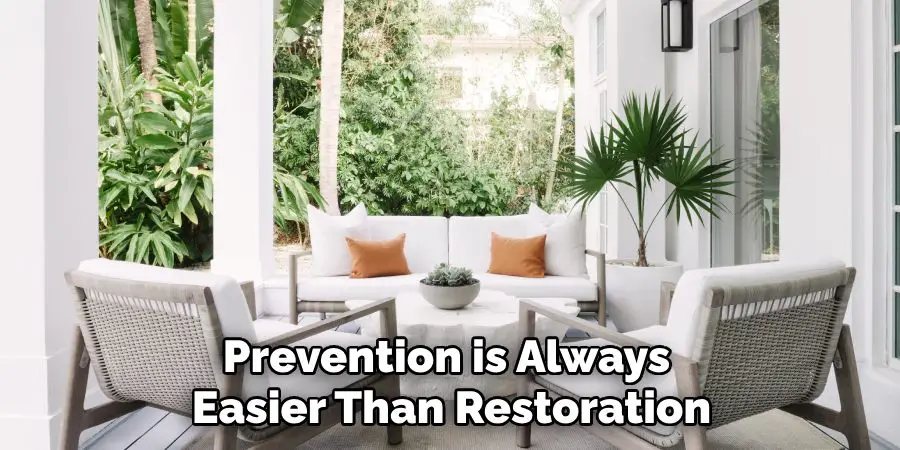
Conclusion
White patio furniture radiates a clean, timeless appeal, but it requires diligent care to maintain that pristine look. From everyday rinsing and mild soap cleaning to occasional deep-cleaning with baking soda or vinegar, these methods ensure your furniture stays bright and inviting. Avoiding harsh chemicals, drying properly, and protecting with UV sprays can extend the life of your furniture while reducing the frequency of tough cleanups. Thanks for reading, and we hope this has given you some inspiration on how to clean white patio furniture!

